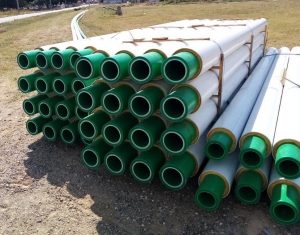
Around 40km from the Turkish border, the Greek city of Alexandroupolis is an important city for Greece that serves as one of its main gateways to the Asian continent. In recent years the city has also benefited from local authorities’ renewed vision for the city; they want to transform Alexandroupolis into a sustainable city for its citizens by using new, efficient and user-friendly technologies and services.
For the local authorities, this transformation literally starts at home.
‘’There’s a big effort about trying to refurbish all the municipal building stock,’’ says Kostas Lymperpoulos of Kriton Energy, who advises the city on its green energy goals. ‘’This is a big target for the municipality.’’
In 2011 the city appointed a new vice mayor for energy and natural resources, and is a co-founder of the Greek Green Cities Network.
Part of the problem lies in poorly-insulated public buildings such as schools, swimming pools, and city hall. As Kostas explains, prior to 1990 there were little to no rules about insulation when constructing public buildings.
Although the city enjoys typical warm Mediterranean summers (it reaches on average 30°C in summer), it can regularly fall to just above freezing point in the winter months.
‘’All our heating systems are based on heating oil, which is which is really bad, not only for the environment, but also for the economic viability of each,’’ says Kostas. This problem became obvious for everyone in February 2021, when all of Greece experienced a once-in-a-decade cold snap, with temperatures in Alexandroupolis reaching as low as -6°C.
Even as the ground froze during that month, the answer to its heating problem could lie just a few hundred metres underneath. About 11 kilometres from the city lies the Aristino geothermal field, where fluid bubbles up from the field at more than 90°C.
Around 11 years ago the Greek government approved the city’s plans to use the geothermal field to help heat its municipal buildings and also generate green energy. The initiative is also partly funded through EU Regional Development funds. As Kostas explains, using the energy alongside refurbishing old buildings means the city could aim for net-zero emissions for public building, or even generate extra revenue.
‘’There is a new government district heating network for municipal buildings and greenhouses and also some social houses. The water temperature could also help attract industry to the area,’’ Kostas explains. ‘’We are blessed I would say because the temperature of the water of the thermal water there is 99 degrees… which is high enough and can be used in a lot of industrial processes.’’
To find smart city solutions for these issues, Alexandroupolis has looked among its European peers. It is a ‘follower city’ in the IRIS project, which brings cities together to develop smart city solutions. This collaboration proved vital for ideas to bring to the city, Kostas explains.
‘’There’s a lot of inspiration from the lighthouse cities,’’ he says, pointing to Nice and how it has combined its geothermal field with artificial intelligence technology to heat some of its districts. He says that discussions from officials in Nice have now led to them adopting PVs and batteries to store energy as well.
For now, Kostas says the city is continuing its work to improve the energy efficiency of municipal buildings in the area, including making City Hall itself an energy-positive building. Kostas hopes that once given the green light from politicians, more buildings can be converted.
‘’There is a lot of effort that is done here in Alexandroupolis,’’ he said. ‘’Compared to other cities in Greece of the same size, I would say that they are going very fast.’’

